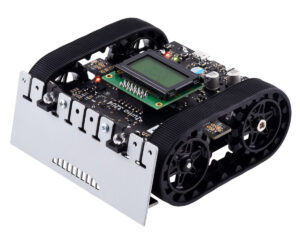
Looking back on our team’s design and design process, a few things are clear. One notable takeaway is that we heavily referenced systems with which we were already familiar. From our experience in ME210: Design and Manufacturing as well as ME480: Control Systems and Mechatronics, we knew how to successfully implement tank drive. We had become familiar with Arduino and in many ways, our design mimics a Zumo, the robot on which we first implemented control systems (shown here). We were lucky to have support from the professors who instructed those courses so we frequently utilized them as resources and that contributed a good deal to our team’s success.
Another takeaway from our design process is that our team made the most progress when we were all together in person. There were several meetings between only the team members working on coding the tracking system, only those designing the circuitboard, or only those assembling the chassis. However, when all of us contributed our perspectives and ideas, we were far more efficient, creative, and able to identify and mitigate issues before they cost too much time or money.
Reflecting on the prototype itself, we were extremely happy with the final prototype. As shown in this video, the robot is able to successfully follow a person at night across a variety of surfaces. The emergency outputs (alarm and lights) are functional and add great value. The robot is not the exact product we all had in mind from the beginning, but it reflects our growth and the diverse ideas of our team.